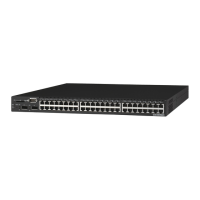127.0.0.1
127.0.0.1 name
127.0.0.1 alias
192.168.160.10
192.168.160.10 name
192.168.160.10 alias
quit | exit
The quit command closes the CLI utility. (Ctrl+d also quits the CLI utility.) If changes have not
been committed, the user is prompted to commit the changes or quit without committing.
Synopsis
quit
Example
cli> set network hostname frutabaga
OK
cli> quit
You have made changes but haven't committed them yet.
To commit the changes, use the “commit” command.
To revert all changes and quit without committing, use “quit!”.
cli> commit
cli> quit
quit!
The quit command closes the CLI utility and discards any uncommitted changes.
rename
The rename command renames parameter. Depending on the parameter, this may result in a
whole subtree of parameters being moved. For instance, if an IP address in the host list is
changed, all parameters associated with that host (name, alias) are moved under the new name.
Synopsis
rename parameter(s) value(s)
Examples
cli> get network hosts 192.168.160.11
network hosts 192.168.160.11 name: fruitbat
alias
cli> rename network hosts 192.168.160.11 192.168.160.222
OK
cli> get network hosts 192.168.160.11
134 MergePoint® SP Manager Installer/User Guide

